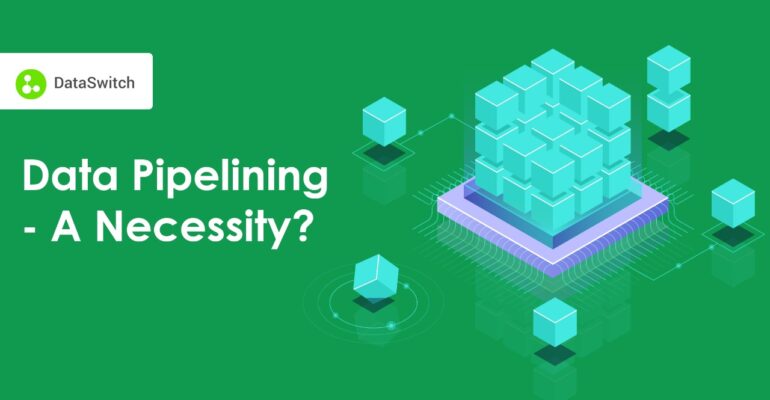Data Pipelining – A Necessity?

Data Pipelining – A Necessity?
In recent years, more companies have transformed into data-driven enterprises. As they migrate to the cloud, they’ve started adapting to cloud-native databases and data warehouses. This has in turn led to many other data pipelining solutions taking root on a large scale.
No, data pipelining isn’t very new to data engineers and scientists- it has simply evolved to cater to the changing goals that drive business decisions and customer experiences.
What Is Data Pipelining?
Data pipelining, in simple words, is the process of causing data to flow efficiently from one location to another. This can be from a SaaS application to a data warehouse, or from a legacy system to a cloud stack.
Ahh, we bet that now you’re starting to see why modern data-driven enterprises deem data pipelining to be this important!
Why Data Pipelines?
Data needs to be collected in a logical format for future data analysis and business decisions. As it is, with the predominance of cloud data migration and SaaS, data is found to be scattered across multiple databases. Also, data silos make it difficult to see the larger picture, forecast, and make the right decisions.
Teams can leverage data pipelines to make better decisions and thrust forward by:
- Consolidating data from multiple data warehouses, or
- Pushing data between currently operational systems.
Data Pipelines vs. ETL Pipelines
Data pipelining and ETL (Extract, Transform, Load) are most often used interchangeably. However, ETL and reverse ETL are subsets of data pipelining.
ETL as abbreviated Extracts data from one system, Transforms the data and finally Loads it into another system, which is a database or a data warehouse. This process happens in batches. That is, you can schedule it at regular intervals, like at 1:30 am every 24hours when the traffic is low.
Similarly, reverse ETL or ELT extracts data from a source system and loads it into the target database before transformation happens. So, transformation happens in the target database. This process too happens in batches.
Data pipelines, however, don’t necessarily transform data and simply moves it from the source to the target system. (Data transformation may or may not happen.) This process does not happen in batches and is instead done in real-time. That is, data is streamed and updated continuously. Also, data needn’t be targeted only to a database or a data warehouse. It can also reach a data lake, SaaS application, an AWS bucket, or can even trigger a business process.
Who Needs A Data Pipeline?
In the ETL market, Informatica, Talend, and Matallion are some of the most established players. However, due to the rapid growth in cloud data engineering spaces, several new players have emerged. Startups and SMBes also demand that data pipelines be cost-effectively included in their modern data infrastructure.
Although not all businesses need a data pipeline, most businesses can reap loads of benefits from having incorporated one into their data architecture. Check the list below to see if you need a data pipeline to:
- Generate or store large amounts of data from numerous sources
- Need real-time and advanced data analysis
- Maintain siloed data sources
- Store data in a cloud-native system.
Find Your Best Fit
As traditional industries like finance, agriculture, real estate, construction, and manufacturing, embrace data-driven solutions, they are found wanting data connectors from vendors that work alongside their vertically oriented SaaS products. Such industries look for vendors who can ease their use of data pipelining with a larger number of integrations, mitigate costs, and give them the ability to customize their solution.
There is also the need for data governance and security for regulated segments like banking and finance. These industries call for open source systems that can run on-premise either partly or completely.
New and open-sources vendors such as Airbyte, Rudderstack, Singer, Meltano, and DataSwitch are steering the way forward by allowing easy adaptation of data pipelines.
DataSwitch is a no-code platform for rapid data modernization. DataSwitch’s pioneer tool DS Migrate helps migrate data schema, data, and process from legacy databases and ETL tools to cloud stacks.
The Schema Redesign tool within DS Migrate provides intuitive, predictive, and self-serviceable automated schema redesign from any old school data model to the modern cloud data model of your choice. After having designed a data pipeline with the Schema Redesign that can be deployed into the cloud system, the Process Converter tool allows you to incrementally add data based on the new schema.
To know more about how DataSwitch can help you build a seamless data pipeline in just a few clicks, book a demo with us now!



